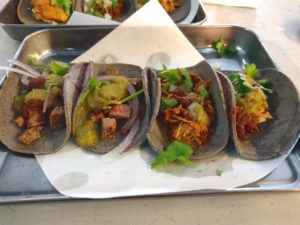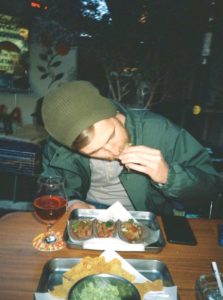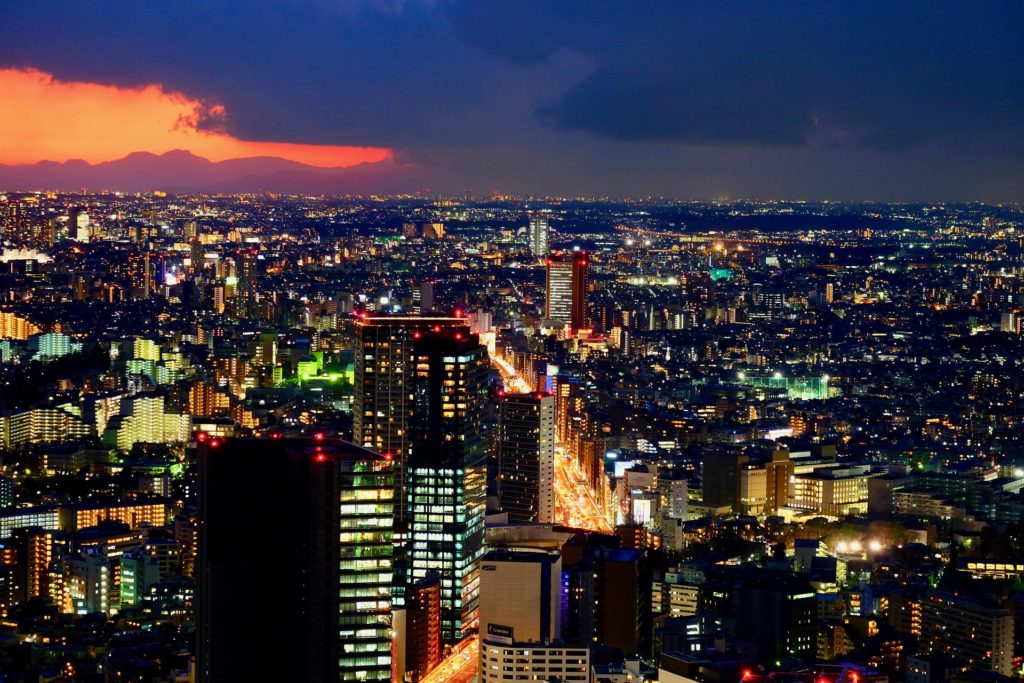Good Eats: The Taco Hunt
Top Image: adoproducciones on Pixabay
This may sound strange to say, but I come from Southern California where tacos aren’t just a food, but a constant point of contention. If you take a SoCal-raised taco lover to any taco hut in the world, you need to be prepared for either criticism, praise, or a deep conversation about what a taco should really be.
Now, you might be asking yourself, why are tacos so important and why am I reading about them here on MUSUBI? To this I can only say: because tacos are a life line. I know we are lucky enough to live in Japan, and it is a wonderful place to live. There are however always going to be things you don’t understand, culture clashes, homesickness, and honestly at least once, you’ll doubt all your decisions. This isn’t because of Japan. It’s just the reality of living so far away from everything you’ve known for your whole life. This is where tacos come in, at least for me. Maybe they will for you too, or you’ll have your own lifeline or “comfort food”.
I’ve been living outside of America for the vast majority of the past six years. I’ve settled in a few places and gotten to enjoy that feeling of being in a totally new place more than once. It’s a great feeling, but it’s tough. One thing I realized is how important food is to people. It’s a connection. A connection to others. A connection to culture. A connection to your past. It’s also just really delicious.

La Cabina’s tacos
People react to homesickness in different ways, but for me it’s usually to gorge on foods from my home. So, I’ve turned it into a fun experience. I look up and try to find local (and not so local) places where I can get the foods I’m craving. Enter taco sanctuary #1, ØL Oslo Brewing Co. in Shibuya. It’s a wonderful American-style crafter beer taproom that is in actuality dedicated to Scandinavian culture and fine craft beer (ØL being the Scandinavian word for beer).
Alongside this already amazing situation for a homesick American boy is a food cart. Enter La Cabina. And what does this food cart sell? I know you know, but I’ll say it anyway: tacos. They also do chips, guacamole, tostadas, ceviche and other delicious foods (the Brewing Co. describes their Mexican food as the best in town, no less). But, I’m here for the tacos.
I’d started my taco hunt a little more locally, but all I could find in my area was the typical TexMex restaurants. Now don’t get me wrong- I like TexMex, but it’s just not the same. TexMex restaurants can be found all over Japan, and the food is generally good. There’s a lot of influence from the US, especially around my area because of a military base. But for a SoCal resident, it’s not the same as street tacos.
It’s just that for a taco connoisseur such as myself (and many of my school chums), there’s something indescribably different about tacos the way we know them. I was actually almost ready to give up on finding authentic tacos. And let me be clear here, tacos are a Mexican food, not Californian. But California tacos are leagues closer to the real thing than TexMex will ever be. And it’s the taste I’ve grown up with. When I first tried the tacos from La Cabina, it was like I was back home again.

The writer chows down. Try them for yourself!
That’s the point of all this. I don’t want you to try and use my homesickness cure as the remedy for yours. I doubt it would work for everyone, but I want you to be aware that it’s going to happen. With all that in mind. I do hope you check it out. Even if you don’t like tacos, the beer at ØL Oslo Brewing Co. is worth the trip alone. As an added bonus, both of these places are entirely English-friendly, so even if you’re Japanese isn’t up to par just yet, you can still enjoy the full range here.
Set a date, take a friend, maybe one who’s going through their own existential crisis about their decision to settle down here. Offer up some advice from someone who’s spent a lot of time away from home. And introduce some of the best tacos you can find this side of the Pacific.
Photo Credits:
Top Image: adoproducciones on Pixabay
Additional images for this article were provided by Michael Gruendner.
All other content (text) created by the original author and © 2020 MUSUBI by Borderlink
Top image: Osaka Convention and Tourism Bureau
If you live in northeast Osaka, you might unknowingly be living right beside one of the most magnanimous gardens around! Tsurumi Ryokuchi Park, officially known as Tsurumi Ryokuchi Expo ’90 Commemorative Park, is as gigantic as its name. Blanketing over 300 square acres of the city in green, it’s an extraordinary and surprisingly unknown secret. Typically less crowded than other popular parks in Osaka, it is well worth your time to seek out and explore. Despite its seeming obscurity, the park is well-maintained and offers a variety of activities and views the whole year round.
In the spring season, when people partake in picnics under the blossoming cherry trees almost daily, this is a perfect flower-viewing spot. Though beautiful any time of the year, the chance to visit the park while the cherry blossoms are in full bloom is an unforgettable experience.
Cherry blossoms or sakura bloom as early as end of February and tend to last up to the third week of April. Each area of the park is filled with different kinds of cherry blossoms, making for a very colorful viewing experience.
Moreover, the park does not only offer cherry blossom trees in spring; It also features a glamorous presentation with its expansive tulip garden. A windmill, the symbol of the park, stands on a hillside, overlooking tulips, salvias, cosmos and other flowers. Visit during the peak of spring for the best possible viewing experience.
In May, rose displays explode in a splash of color. Easily walkable from the windmill area, the park’s Rose Garden has 140 species of 5,400 roses. You can see all manner of lovely flowers while walking around the park.
The park also boasts a large pond filled with ducks and other wildlife. The park in general is home to hundreds of types of birds, insects, and other living creatures year-round. There’s never a shortage of things to see in Tsurumi Ryokuchi!
As if that wasn’t enough, tennis courts, a dog park, bathhouse, wedding reception hall, campsite, children’s playground, swimming pool, and a fitness center are just some of what this massive space has to offer.
As wonderful as the facilities are, the main draw of the park is still nature. There is the “Big Lawn,” a stretch of green about the size of four Koshien Stadiums (the home Osaka’s beloved baseball team). This wide green space is perfect for picnicking or viewing the park’s Zelkova trees.
One of Japan’s (and the world’s) largest greenhouses, the tall glass-covered Sakuya Konohana Kan, dominates the southern end of the park. This large flower pavilion houses plants in climate-controlled areas to recreate their native homes. There is a section for plants native to dry, arid areas as well as greenery from hot, humid places. Over 15,000 plants are grown and kept in the conservatory.
Planning your trip: Consider spending a whole day around the park; it’s so big, you may need more than one! The best way to get there is to take a train to Nagahori Tsurumi Park. You don’t need to bring a large picnic food as many convenience store and supermarkets nearby offer bento packs and drinks. Several stores are available near each entrance. Above all, have fun, and enjoy the park!
Photo Credits:
Top image: Osaka Convention and Tourism Bureau
All other content (text) created by the original author and © 2020 MUSUBI by Borderlink
Top photo: Peggy_Marco on Pixabay
My wife and I first arrived in Tokyo, Japan as a newlyweds. We’ve now been living here for three decades. We’ve spent time in both the the biggest city of all and possibly the most rural of small country towns. We feel we have lots to say with those who want to come and live here some day. So, I’d like to share with you what I have learned from all those years so that maybe you’ll have an easier time when you start your own Japan experience.
There is a famous saying in Japan that moving makes you poor, and after having moved a half-dozen times, we can attest to the veracity of that proverb. After many tries, we finally settled down in a home of our own here in the suburbs of Okayama City in sunny Okayama prefecture. Here are some of the things we wished we had known before coming to Japan, and some things we never thought about that we learned along the way:
Travel light, and get all the things you need when you arrive here (having a couple grand in USD helps with that last part!) Just transporting your things from overseas may cost you much more than you’d like, and once they arrive you may find they do not fit or are not needed depending what part of Japan you live in. You can buy all your furniture either new or at a discount/recycle shop.

Photo by t_watanabe on Pixabay
We came fresh out of college so had lots of debt, and had to live with no furniture for a time. We even had to settle for using a box as a our table for the first month before we started getting paid. This by they way can take up to two months with many companies in Japan, and you will likely be living off your savings and credit cards for a time. But we learned that you do not need a lot to be happy. Japan is about minimizing and downsizing. If you travel here lightly, you can get all the things you want once you’ve ensured you’ll be staying.
Remember that when it comes time to moving, you will often have to get rid of everything or ship it. This can easily cost a few months’ salary to do, so the less you live with the easier it will be when moving out. We’re in our current place for the long run, so we’ve acquired a lot of things over the years: bicycles, cars, motorcycles, a dog… we’re now living in a wonderful home with our own garden and three kids to help us take care of it. At first however, we were living in a 2DK apartment in west Tokyo that was barely large enough for the two of us. I think part of the reason we ever got out of there was due to not having the space for that much stuff to begin with!
Don’t worry about not knowing much Japanese or having a ton of friends in Japan right off the bat. You will learn it by living here, and you will make friends along the way. In rural Japan, we found we could often make friends faster since we were “celebrities” in some places. Although seemingly shy at first, people in Japan will want to find out more about you. And unlike the city, folks out in the country have time to spare! They can often seem much more friendly than in the big cities where you feel like you’ve just become part of the rat race.
This is not to say that city life in Japan is cold or joyless; we loved our time in Tokyo and enjoyed having many things to do every weekend…almost too many choices! We were also able to enjoy our weekends and holidays as we’d get out of Tokyo and explore some of the great places like Niiko, Kamakura, the Atami area Nagano etc. We took express trains to the end of the line in places like Chichibu to see what the rural life was like.
Finally, we decided that it would be a better place to raise our children, and ended up moving first to Tottori and then to Okayama. Each place we visited, we really liked for different reasons. Every area in Japan has its pros and cons. The key to be happy we found is finding out what is great about your area, whether it is a park, a pub etc. If you choose rural or semi-rural Japan, just be aware that it may be harder to find other foreigners, and you may feel isolated at times.
It’s helpful to have hobbies that help you make friends, and not become lonely and stressed in your free time. One hobby that helped us on moving out to the country: Hiking! There are a lot of great places to hike in Japan. Another one: gardening. We both love tending to one. Now, we have a dog so that keeps my kids hiking and a garden that keeps us busy. And the list goes on. My kids do pottery and martial arts at the local community center. My wife took courses in flower arranging and had a private teacher come to our home and teach her for years. Keep active, and you will stay happy and healthy.
I hope my experiences will help you! Best of luck with your (near or far) future move, and the start of your Japan adventure!
For more information on how you can live and work in Japan, and maybe settle down here for life some day, read about the job of an ALT and how you can experience Japan for yourself!
Photo Credits:
Top photo: Peggy_Marco on Pixabay
1 – t_watanabe on Pixabay
All other content (text) created by the original author and © 2020 MUSUBI by Borderlink
